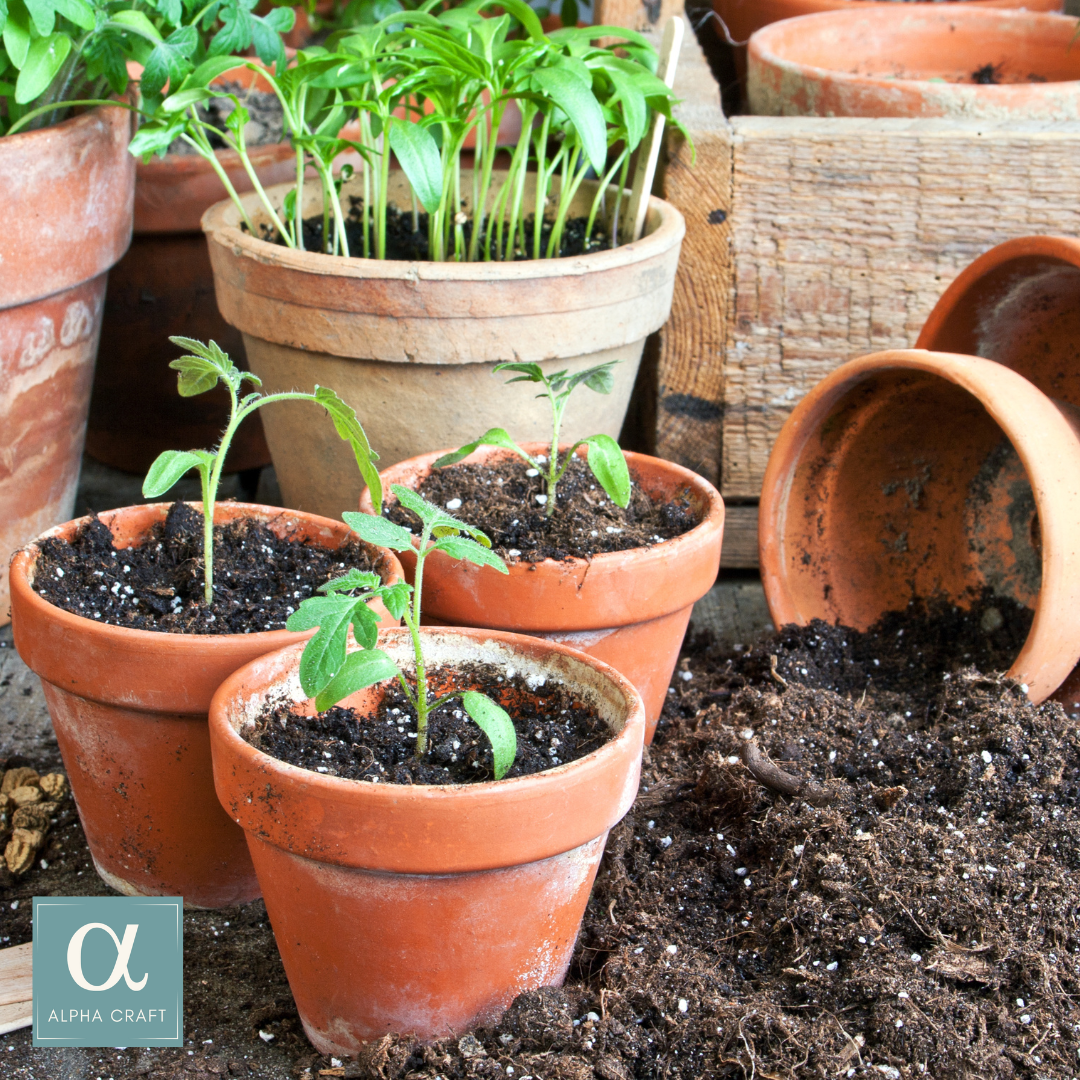Potting Soil Mix
Making your own potting soil is easy and cost-effective. With the right mix of compost, coco coir, and perlite or sand, you can create a balanced, nutrient-rich blend that supports healthy root growth and strong, thriving plants.

Inventory
Some of the links in this post are affiliate links, and we may receive a commission if you purchase through them.
Tools & Equipment
- Garden Trowel
- 5-Gallon Bucket
- Large Bin or Bucket
Ingredients
- Coco Coir, 2 parts
- Vermiculite, 1 part
- Perlite, 1 part
- Compost, 2 parts
- Worm Castings, 1/2 part (or Make It)
Instructions
Prep Coco Coir
If your coco coir is still a brick from the packaging, add it to a large bin and pour some water on it until the coco coir is light and fluffy. It will expand to about 4-9 x in volume.
Mix ingredients
Using a trowel as a measuring tool, add one scoop each of vermiculite and perlite, two scoops each of compost and coco coir, and half a scoop of worm castings to the 5-gallon bucket. Repeat until you have enough mix. Stir to combine the ingredients evenly.
If you make a large batch, mix in a wheelbarrow and use a 5-gallon bucket as a measuring tool.
Storage: Put any remaining mix in a tightly sealed bucket or bin. If necessary, keep the lid off until the mix is dry. Store in a cool, dry place. Check for mold, clumping, or an off smell before using.
Modifications
Amendments
Depending on your plant's needs, consider the following amendments to help boost soil and plant health.
- Worm Castings (in small amounts) | nutrients
- Alfalfa Meal | nitrogen & trace minerals
- Fish Emulsion/Fish Meal | balanced nitrogen, phosphorus & potassium
- Kelp Meal/Seaweed | potassium & micronutrients
- Leaf Mold | soil structure & water retention
- Pine Needles | lowers pH
- Agricultural Lime | raises pH, calcium & magnesium
- Gypsum | calcium without altering pH
- Rock Phosphate | long-term phosphorus
- Greensand | potassium & trace minerals
- Azomite | trace minerals
- Dolomite Lime | raises pH
- Sulfur | lowers pH, sulfur
- Vermiculite | retains moisture
- Zeolite | nutrient retention
- Basalt Rock Dust | slow-releasing minerals
- Biochar | carbon, nutrient retention
- Epsom Salt | magnesium & sulfur
- Crushed Oyster Shells | calcium, raises pH
- Granite Dust | slow-releasing potassium
There are some amendments you want to avoid for potted and/or interior plants.
- Fresh Manure - causes odor and may "burn" plants due to high nitrogen levels.
- Compost - causes odor and attract pests.
- Large Wood Chips or Bark - can tie up nitrogen as it breaks down
- Bone Meal (Unsterilized) - causes odor and attracts pests.
- Blood Meal - causes odor and can result in nitrogen "burn"
- Wood Ash - can raise pH too quickly
- Fresh Grass Clipping - causes odors and attracts pests
Customize for Plant Needs
Indoor Potted Plants
Drainage: Plants indoors tend to be both over and under-watered. To prevent water-logging, include perlite and/or vermiculite for aeration. Coco coir can help with over-watering by absorbing excess but keeping it supplied when the plant needs it.
Pests/Disease: Organic ingredients can bring pests, weed seeds, and diseases. To combat this, ensure that any used compost is finished and screened. It can also be sterilized by heating it to 160°F for 30 minutes.
Outdoor Potted Plants
Insulation: Outside, plants must endure more highs and lows, winds, and rains. To keep the plant insulated from extreme weather, the soil should be covered with mulch, such as wood chips, pine needles, or straw.
Durability: Outdoor plants can benefit from having more sand or garden soil in their mix to make them more sturdy against strong winds.
Nutrients: The elements can be demanding on plants, so a good amount of compost or worm casings will help keep plants well-fed.
Special Types of Plants
- Cactus & Succulents
Requires fast drainage and minimal water retention to mimic arid conditions. Use sand, perlite or pumice, and a small amount of coco coir. - Orchids
Requires aeration to mimic the airy, tree-like environment in which orchids naturally grow. Use chunky bark, sphagnum moss, charcoal, and perlite. - Acid Loving Plants
Blueberries, Azaleas, camellias, and ferns are just a few of the acid-loving plants frequently planted in pots. They like a low pH and good drainage. Use peat moss, pine bark, compost, and perlite. - Houseplants
Common indoor plants like pothos, philodendrons, and peace lilies use a blend with minimal risk of pests and odors. Use coco coir, perlite, and a small amount of compost.
Every craft begins as an alpha craft. Crafts are developed by considering the function and effect of inputs and all the actions needed to create the transformation. They are designed with theory and research but have not been personally tested by any Guild Craft Trade employee or member. When you perform a craft at this stage, it is through your own experimentation (and risk, if there is any).
This designation is part of our mission to build a chain of production for cottage industry. To learn more, see our About page.